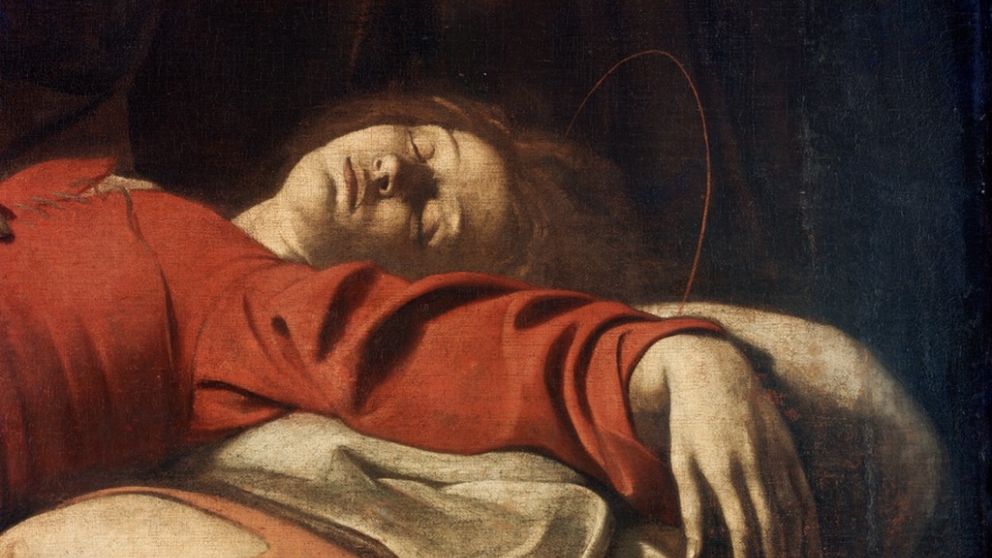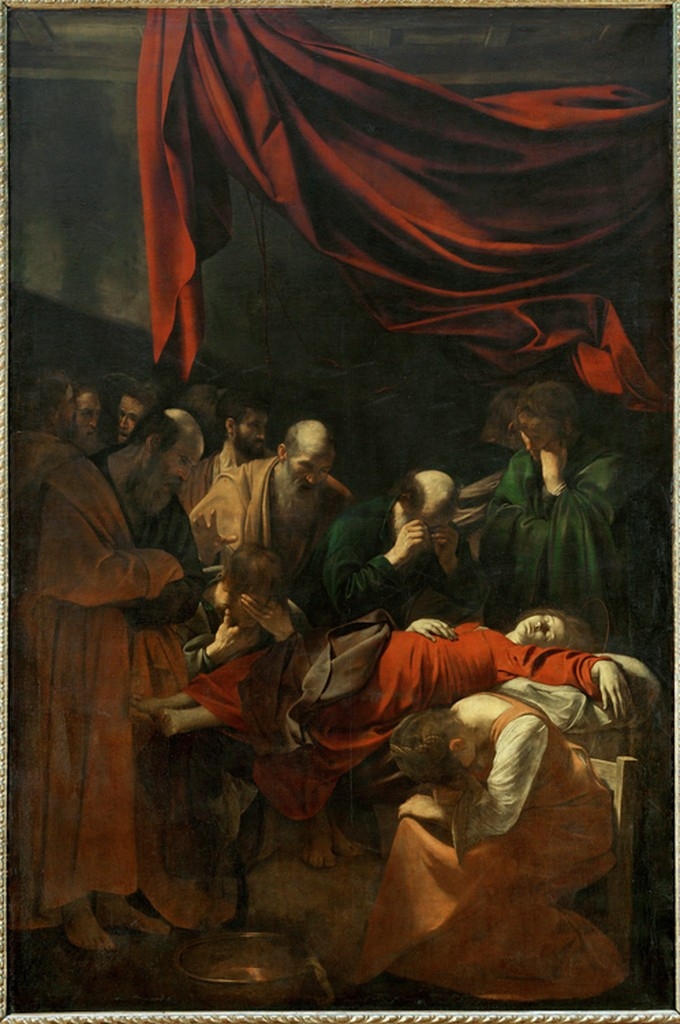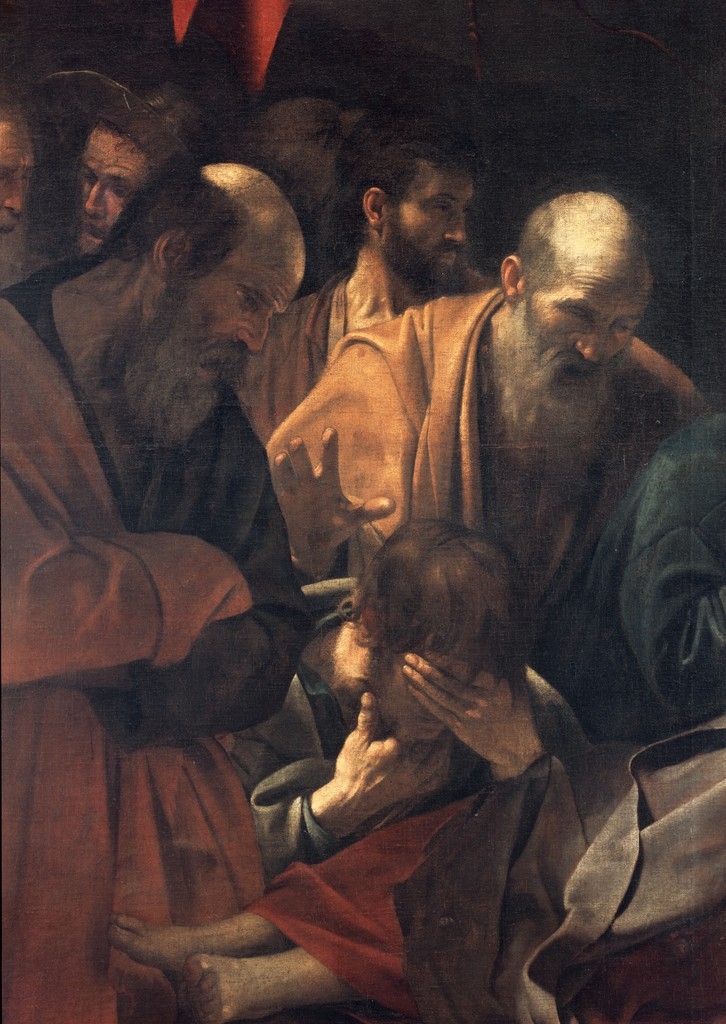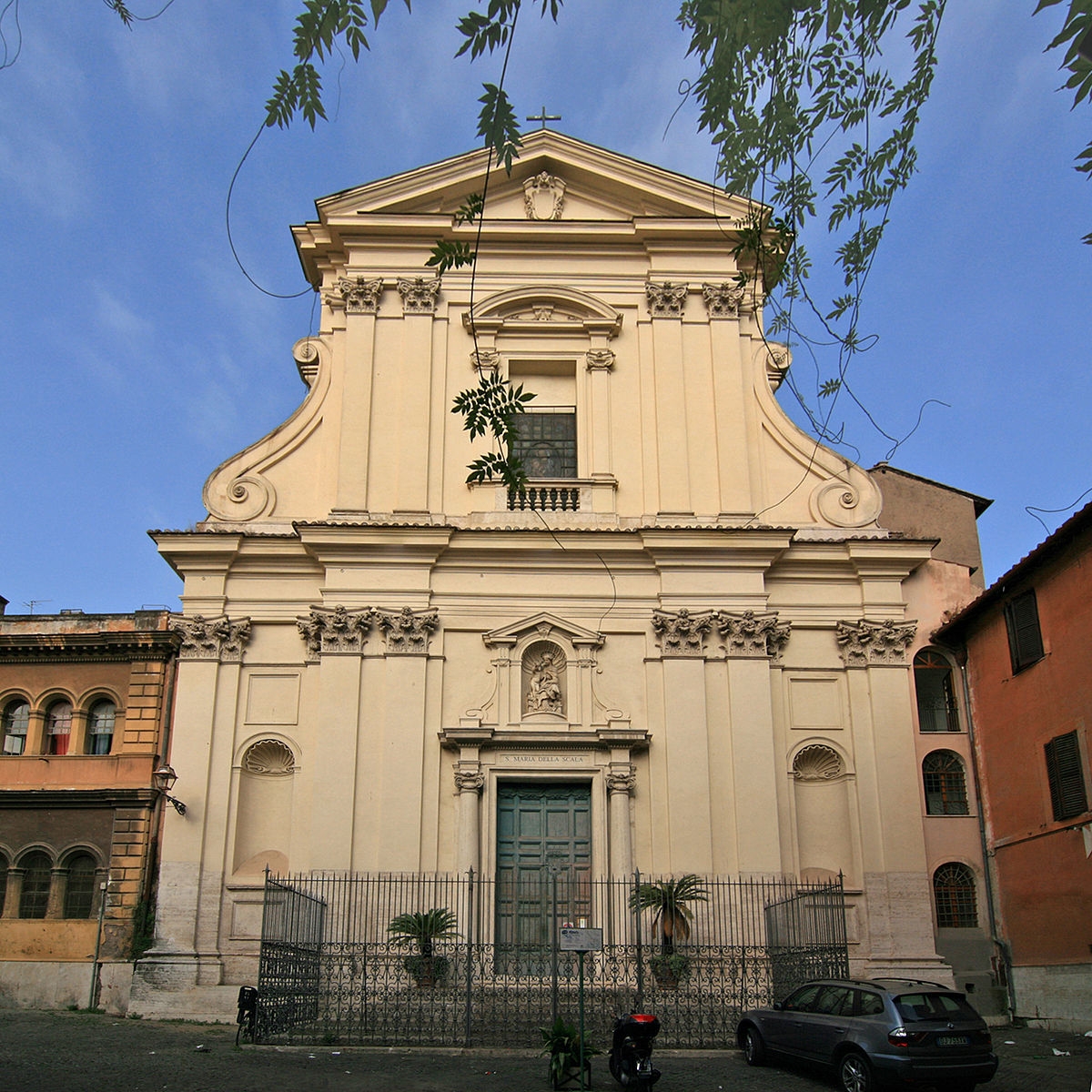Death of the Virgin
Michelangelo Merisi II Caravaggio's representation of the dead Madonna
Introduction
Michelangelo Merisi II Caravaggio was an Italian Renaissance painter from the late 16th century to the early 17th century (1571-1610). Caravaggio painted one of his many works, the Death of the Virgin, which was commissioned in 1601 [1] and was created around 1606. This painting reveals much about the time period following the religious reformation of the Catholic Church and how these reformations were depicted and enforced in art styles. As a painting, the Death of the Virgin represents the death of the biblical Virgin Mary as she waits to ascend to heaven [2]. The Death of the Virgin by Caravaggio reveals the close, useful relationship between religion and art and how Catholicism is expressed and promoted through art as seen by Caravaggio using Counter-Reformation styles. The Death of the Virgin also reveals a time religious differences, violence, and stress through what religion a painting represented and illustrates the accepted art styles of the time as well as the promotion of mass consumption through viewing and collecting religious art. By investigating the Death of the Virgin, we can gain a little more of an understanding of the Counter-Reformation period and how religion was used in an art medium. The expression of Counter-Reformation beliefs through art will first be explored, then how the controversy of the painting reveals religious differences and which art styles were acceptable for Catholicism, and finally how the Death of the Virgin demonstrates the phenomenon of mass consumption.
Description and Background
The Death of the Virgin is a 369 x 245 cm oil painting on canvas, which is roughly the size of a garage door. The Death of the Virgin presents the death of the Virgin Mary with the apostles Peter, Andrew, Paul, Matthew, and John visible in the background along with a woman who is assumed to have washed the corpse [3]. Caravaggio used the techniques of chiaroscuro as depicted by a single vibrant light source against a dark background as well as a vivid red curtain. Caravaggio started his career in Catholic Rome, mainly painting important saints and relics of the Catholic Church. Michelangelo Caravaggio focused on materiality which was sometimes at odds with the idea of sacrality [4]. The painting itself was commissioned as an altarpiece for a private chapel in the recently founded church, Santa Maria della Scala, located in Trastevere, Rome, Italy, by the patron Laerzio Cherubini in 1601 [5]. Once the the Death of the Virgin was completed by Caravaggio around 1606, the painting was soon removed from the altar of the chapel, and today the painting sits inside the Louvre.
Counter-Reformation Beliefs
The Death of the Virgin by Caravaggio illustrates the deep, useful, and promotional relationship between the Catholic religion and art as represented through the depiction of Counter-Reformation styles in early modern artworks. Counter-Reformation styles of art include the use of strong emotions to make the artwork more accessible to everyday people. Caravaggio’s Death of the Virgin connects to our class theme of the Reformation, and illustrates how the Catholic Church responded to opposing religions through the Council of Trent and used art styles promoted by the Counter-Reformation to promote their religious ideals and beliefs. Counter-Reformation art styles encouraged a sense of empathetic engagement with visual art. In order to do this effectively, they worked to engage with the viewer directly as it was more important for the emotional aspects of art to remain in the forefront rather than more narrative elements that were relative to other art styles [6]. Consequently, this use of realism by Caravaggio evokes emotion with the use of the body, specifically in that of the Virgin Mary in The Death of the Virgin. It was the Council of Trent, which embodied the aspirations and motivations of the Catholic Church following a period of Reformations that actively pushed for this type of art style [7]. We can see this more specifically as Counter-Reformation styles emphasized works of art that could be read by the poor and had a clear narrative. Caravaggio exemplifies this Counter-Reformation style through the use of hyper-realistic and highly emotional religious images [8], aligning himself with the promotion of Catholic Church values. By Caravaggio using an art style that was promoted by the Catholic Church during the Counter-Reformation, his Death of the Virgin works to promote the Church and by association represents the values and beliefs of the Church. Here we can begin to see how the Counter-Reformation influenced the style of art during this time and how Caravaggio’s alignment with these styles acts as a promotion of Counter-Reformation beliefs.
Controversy and Acceptance
However, these new Counter-Reformation styles were not without controversy. With new art styles emerging at this time which focused on materiality, there is a sense of doubt over what these art styles represented. Was this painting a representation of Catholicism or perhaps Protestantism in disguise? Caravaggio’s Death of the Virgin is important because of its controversy in a post-Reformation heyday. During this time there were many attitudes and actions of religious violence and difference which spread to art as there was a concern about what religious beliefs the art may have suggested or reflected. This debate became a point of stress for many Catholics in Italy as there was the fear of whether the artwork could be vaguely connected to Protestantism or not. Protestantism attacked the Catholic view of the incorruptibility of saints and placed an emphasis on materiality. For Caravaggio’s Death of the Virgin, the painting was removed from the church of catholic Carmelites for its lack of decorum and painting style which was based in materiality rather than incorruptibility, seeming to align more with Protestant values. This is depicted through the painting’s lack of angels and signs of assumption that are connected to the virgin Mary’s death in a religious context [9]. In addition to not providing enough “majesty” [10] within the painting, the Death of the Virgin presented a common woman who had died and is waiting for atonement [11], rather than a devout figure waiting to be transported into the arms of God [12].
The controversy surrounding the Death of the Virgin serves as representation of not only a time of religious violence and stress, but also extends to illustrate the value of Catholic religious art during the time period and how those ideals are being rethought through art styles due to such stress and violence. Critics of the painting, such as the physician, Giulio Mancini [12] and the painter, Giovanni Baglione [13] targeted the painting for portraying vulgarity and a lack of competence [14]. The painting was expected to portray figures and saints with suitable expressive and physical characteristics of the divine, as representative of Catholic art styles, which was favored over more realistic, life-like depictions of revered figures. The latter was viewed as lacking Catholic devotion [15] and acted as a point of concern and stress over whether the art may represent Protestantism. An important aspect to include in artworks during this time was a representation of incorruptibility [16] to promote and solidify Catholic religious beliefs of sacred figures. Notably, Caravaggio’s painting departs from these aspects, as instead he painted the apostles too consumed in their own grief to attend to Mary and drape a mantle around her, and dishonored her by kneeling [17]. The reception of the Death of the Virgin was found to be lacking due to no angels, no clouds, no God, and no real death being mourned, indicating a lack in all the necessary reverence and beauty, Catholics especially, would view as appropriate in art styles. As a result, the Death of the Virgin serves to emphasize the importance of depicting certain art styles during a time of religious violence and controversy, highlighting which were deemed acceptable based on religious views.
Mass Consumption
Besides representing notions of religious controversy and accepted art styles of the time, the Death of the Virgin also serves as an example of mass consumption. After the painting was disposed of by the church, it was highly sought after by nobles for its exquisite technical qualities and reputation, being viewed by many as a worthy addition to a noble collection [19]. The fact that people still desired the painting based on its technicality represents an increased shift in the popularity of buying and owning religious art. Elite families during this portion of the Early Modern Era enjoyed buying works of sacred art [20], which illustrates the idea of mass consumption becoming more popular as people wanted to obtain religious works for their own benefit and satisfaction. This occurrence of acquiring religious art through private ownership following church ownership represents a wider shift in patronage and patrons during the Renaissance. For example, there was a growing trend in the fifteenth century to have artwork commissioned for households, which was called tondi. Tondi represents the trend to have objects and artwork to be commissioned by patrons for the domestic sphere and purposes rather than a public religious setting [21]. Through the rise in private patronage and acquiring art as a way to achieve personal fame and worldly prestige during the Renaissance [22], we see a shift to mass consumption and the increasing desire to showcase one’ status and wealth, which eventually continued to evolve into the rise of secular art for private patrons. Overall, the Death of the Virgin represents a version of mass consumption as seen by the desire to acquire personal religious art, even if it had been discarded by churches.
Conclusion
Caravaggio’s painting of the Death of the Virgin can express much of a time period and those who lived through it. The Death of the Virgin not only represents the use of religious art styles of intense emotion to promote religious beliefs of the Counter-Reformation and Catholic Church, but also represents how ingrained religious differences and fears were during the early 17th century as well as what art styles were deemed acceptable and highlights the popularity of mass consumption in promoting religious feelings and collecting religious art. The Death of the Virgin illustrates that a depiction of death represents more than its face value and shows us the many facts and secrets a single object can tell us about the past.
References
[1] Christopher Allen, “Caravaggio’s Complexion: The Humoral Characterization of Artists in the Early Modern Period,” Intellectual History Review 18, no. 1 (March 2008): 61-74, at 66.
[2] Avigdor W. G. Posèq,“Pathosformels, Decorum and the ‘Art of Gestures’ in Caravaggio’s Death of the Virgin” Konsthistorisk Tidskrift 61, no. 1-2 ( 1992): 27-44, at 30.
[3] Todd P. Olson, “Corruption,” in Caravaggio’s Pitiful Relics (New Haven: Yale University Press, 2014) 139-193, at 149.
[4] Olson, “Corruption," 139.
[5] Olson, “Corruption," 146.
[6] Dan O’Brien, “Caravaggio, Empathy and Christ.” Heythrop Journal 61, no. 3 (May 2020): 437-446, at 438-439.
[7] Brendan Prendeville, “A Heartfelt Gesture: Separation and Feeling, Darkness and Illusion in Caravaggio,” Oxford Art Journal 36, no. 2 (2013): 185-206, at 200.
[8] John Gash, “Counter-Reformation Countenances: Catholic Art and Attitude from Caravaggio to Rubens,” Studies: An Irish Quarterly Review 104, no. 416 (2015): 373-387, at 377-379.
[9] Olson, “Corruption," 149.
[10] Ibid., 149.
[11] Francis Gage, “Caravaggio’s Death of the Virgin, Giulio Mancini, and the Madonna Blasphemed,” in Caravaggio: Reflections and Refractions. ed. Lorenzo Pericolo and David M. Stone (Surrey: Ashgate, 2014) 83-104, at 83.
[12] Olson, “Corruption,” 154.
[13] Gage, “Caravaggio’s Death of the Virgin," 83.
[14] Olson, “Corruption,” 191.
[15] Posèq,“Pathosformels, Decorum and the ‘Art of Gestures’," 27.
[16] Gage, “Caravaggio’s Death of the Virgin," 90.
[17] Olson, “Corruption,” 188.
[18] Gage, “Caravaggio’s Death of the Virgin," 96.
[19] Olson, “Corruption,” 147.
[20] Pamela Jones, “The Age of Caravaggio: Early Modern Catholicism,” Studies: An Irish Quarterly Review 86, no. 341 (1997): 33-42, at 38.
[21] Roberta J. M. Olson. “Lost and Partially Found: The Tondo, a Significant Florentine Art Form, in Documents of the Renaissance.” Artibus et Historiae 14, no. 27 (1993): 31–65, at 31.
[22] Westchester Community College, “Private Patronage and Secular Art the Renaissance,” Art 109 Renaissance to Modern, August 3, 2015, https://art109textbook.wordpress.com/new-online-textbook-2-2/chapter-3-….




